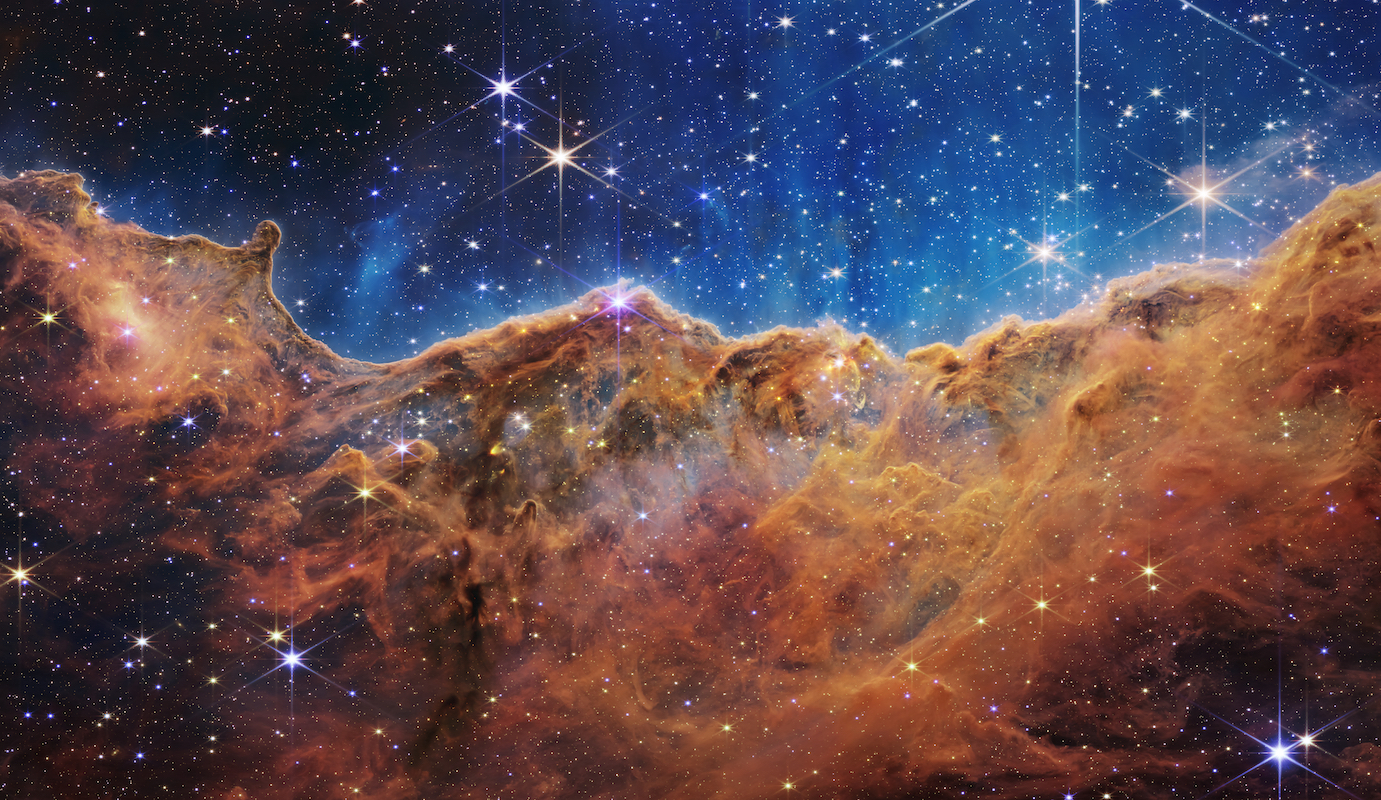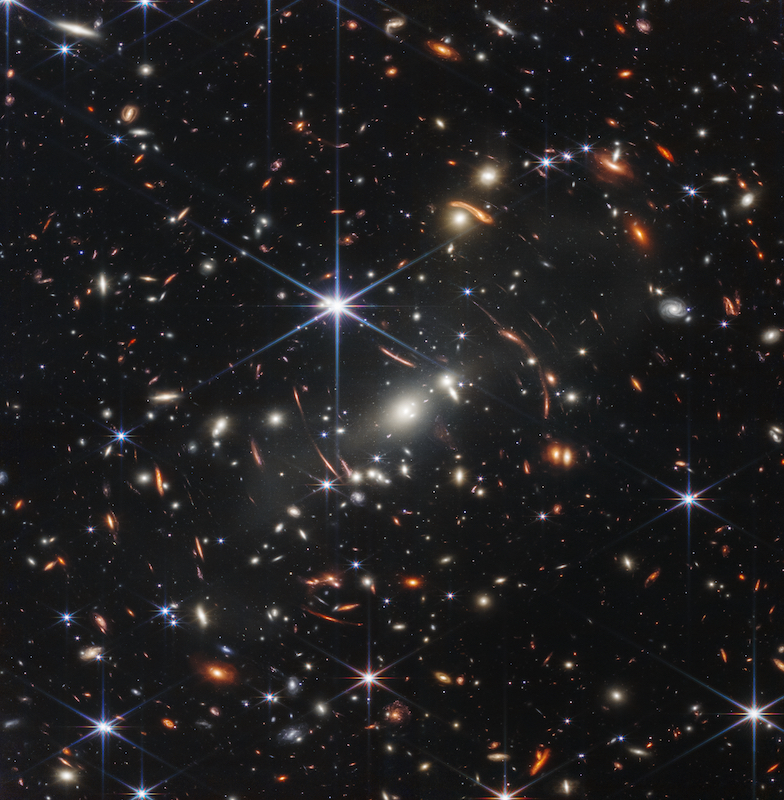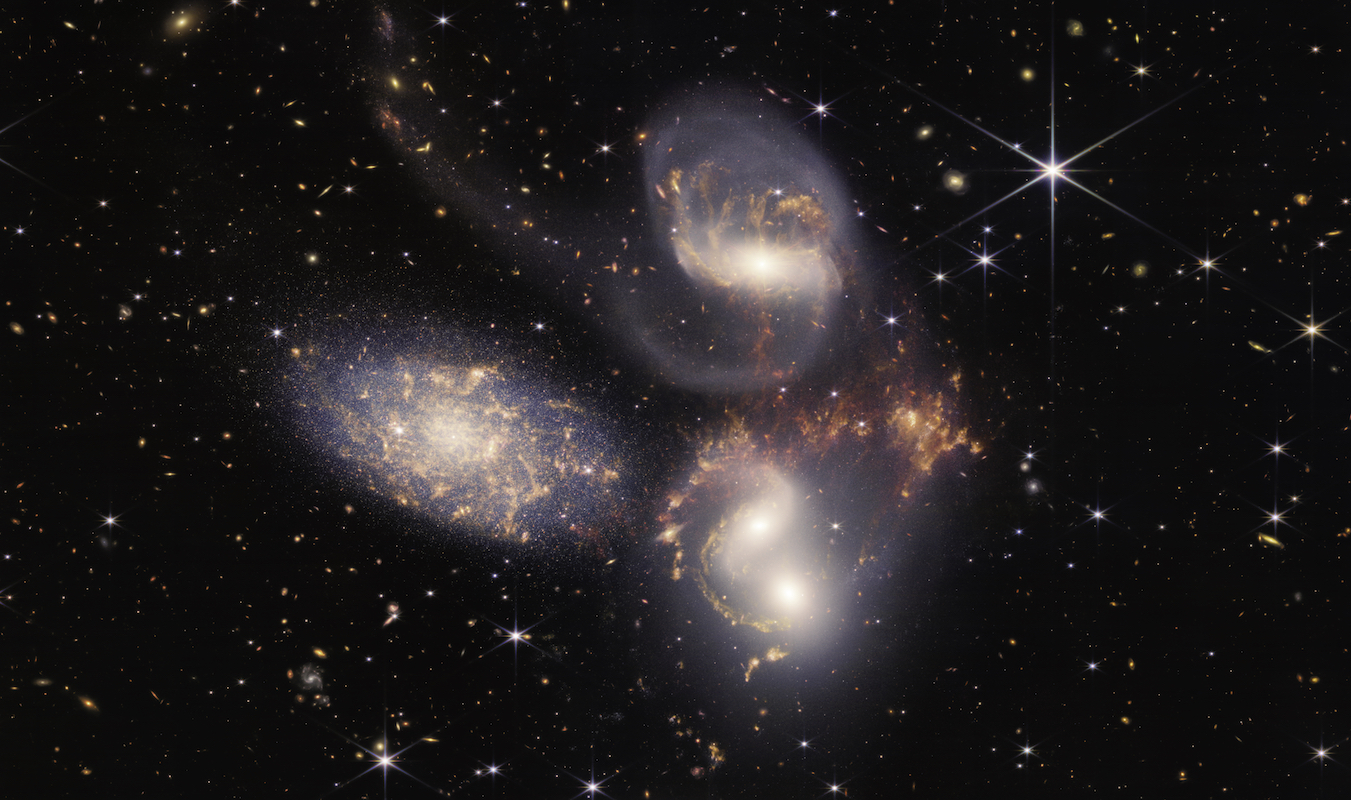This website uses cookies so that we can provide you with the best user experience possible. Cookie information is stored in your browser and performs functions such as recognising you when you return to our website and helping our team to understand which sections of the website you find most interesting and useful.
Written in the stars: a look through the lens of the James Webb Space Telescope
By Gabriel Power | 2 September 2022 | Culture
As the JWST releases the most in-depth and dramatic images of our universe yet, we celebrate a truly epic moment in scientific theatre

Scientific breakthroughs aren’t supposed to happen like this. So often the result of a chance laboratory finding or buried as a footnote in an impossibly niche doctoral thesis, events that shape our understanding of our world — and the universe in which it resides — are so often burdened by the weight of the complex scientific method that led to their discovery that their eventual reporting in mainstream news can seem like something of a damp squib.
But, with the James Webb Space Telescope (JWST), and the photos it released in July, Nasa has orchestrated one of the great pieces of scientific theatre. These images are the long-awaited showpiece of the most advanced space telescope ever constructed, borne of decades of work by some of the brightest minds in aeronautical engineering.
With the release on the horizon, the US space agency teased the watching world into a state of frenzy, ratcheting up the media tension as we awaited the file transfer that would change everything. It was a daring manoeuvre, shrouding a project that Nasa was effectively staking its reputation on in a veneer of pop science.
Indeed, by the time the photos came through, the words “James Webb Telescope” were as ubiquitous among the patrons of your local tearoom as they were on the news tickers of Times Square. US President Joe Biden was even called upon by Nasa to be the official publisher of the first photo.

With that photo, it became clear that Nasa had known they were sitting on something deeply special – on one of those exceptionally rare, once-in-a-generation scientific findings that would ignite the imaginations of not just aeronautical engineers or astronomy enthusiasts, but of everyone who laid eyes on these images.
Remarkably, the first image to be published, dubbed Webb’s First Deep Field, was a simple operational image – meaning its purpose was essentially to test the imaging capabilities of the probe, which has been in orbit around the Sun since December 2021. Rather than being focused on one particular celestial body or nebula, as subsequent images would be, it was instead a photo taken through the gaps in the SMACS 0723 galaxy cluster, where gravitational lensing of light allowed for an ultra-wide field of view of the distant galaxies behind it. The image is chaotic, noisy and unfocused. But its beauty is undeniable, with or without the era-defining scientific context behind it.
The JWST is now the largest telescope in space and is effectively a replacement for the legendary Hubble Space Telescope, which has been bringing us glimpses of deep space since the 1990s. But the JWST’s capabilities are far beyond Hubble’s. For a start, its unparalleled infrared resolution allows it to see considerably further into the cosmic scaffold than even the deepest Hubble images. What’s more, Hubble’s famed Ultra-Deep Field image took months to capture (between 2003 and 2004). Webb’s First Deep Field took just 12 hours.

And the results are breathtaking. From margin to margin, it is the most intensely bright and detailed rendering of the universe that humans have ever seen, overloaded with information. Galaxies and nebulas that could swallow our Solar System quadrillions of times over are almost lost in the mess of light; data tells us that what we are looking at is a vast expanse of nothing, punctuated almost unfathomably infrequently by objects that eroded into the ether billions of years ago. But here they sit shoulder to shoulder as if close neighbours, cuddled close to each other in the coldest, darkest arena imaginable.
The Deep Field was soon followed by photos of nebulas and star groups that simply added to the incomprehensibility of what Nasa has achieved with the JWST. Swirling masses, some opaque, some translucent, replete with whisps and textured layers one might find in a Renaissance painting. They are warm, serene and beguiling, despite the fact that, deep down, we know that we are looking at images of cosmic forces and processes that can warp spacetime and rip black holes apart, and that capture a span of space and time that defies explanation.
It may be a cliche to express awe at the scale and majesty of the universe, but the fruits of JWST’s labour will no doubt be a seminal moment for a new generation of budding astronomers. In a world where vanity projects and – scientifically dubious – terraforming missions to Mars dominate the field of space exploration, it was going to take an old master to set the record straight – and Nasa has stepped up to the plate in a manner that has exceeded all expectations.







